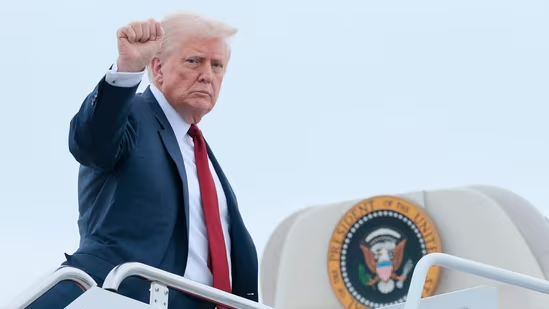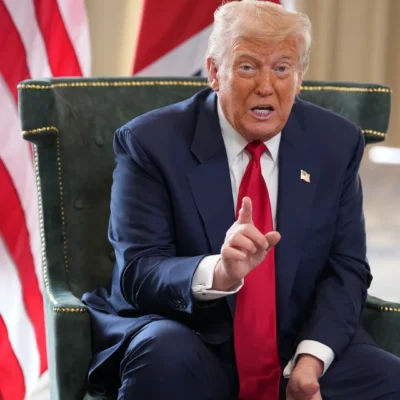In a recent development that has stirred conversations across political and cultural spaces, the Smithsonian Institution is at the center of a new controversy. A label referring to Donald Trump’s impeachments was quietly removed from an exhibit at the Smithsonian’s National Museum of American History. The museum explained that the removal was based purely on visual design reasons, not political pressure or content concerns.
Still, this decision raised many eyebrows. Critics and observers began asking whether the removal of such a historically significant fact was appropriate, even if it was due to layout concerns.
This article explains what happened, what the Smithsonian said, and why this incident matters in the larger discussion about how museums present history.
Why Was the Trump Label Removed From the Impeachment Exhibit?
The Smithsonian confirmed that a label about Donald Trump’s two impeachments was originally included in a panel in the “American Presidency” exhibit. However, before the exhibit opened, the label was removed. Museum officials said the text disrupted the visual design of the display and made it look cluttered.
According to a statement from the museum:
The label was removed during the design process because its appearance disrupted the visual coherence of the panel. It was not related to the label’s content.
Despite the explanation, some people questioned the decision. The Washington Post reported that earlier drafts of the exhibit included the Trump label, and they published images showing it was later cut from the final version.
What Was the Exhibit About?
The exhibit is part of the American Presidency: A Glorious Burden gallery. It explores the history, challenges, and responsibilities of the U.S. presidency. The display includes information on elections, presidential crises, major historical events, and impeachments.
Previous impeachments — including those of Andrew Johnson, Richard Nixon (who resigned before the process was complete), and Bill Clinton — have been included in the exhibit. Because of this, many people expected Trump’s impeachments to be featured too.
The omission caught the attention of journalists and museum visitors who noticed that two major historical events involving a U.S. president were not mentioned.
How Did the Public Find Out?
The missing Trump label first came to public attention after visitors and reporters noticed its absence. The Washington Post compared older and newer versions of the display and found that the original draft included a line that stated:
Donald J. Trump was impeached twice by the House of Representatives (2019 and 2021), becoming the first U.S. president to be impeached twice.
However, this line was missing from the final panel installed at the exhibit. This led to a wave of online discussion and debate about why such an important fact was removed.
Smithsonian’s Response and Clarification
After news coverage and online criticism, the Smithsonian issued a statement to clarify the situation. Officials explained that the decision had nothing to do with the content of the label or any effort to avoid political controversy. Instead, they said the label was taken out because it made the panel look crowded and difficult to read.
They also added that Trump’s impeachments are still mentioned in other areas of the museum and in their digital and educational resources.
While the explanation satisfied some, others were not convinced. Critics said that such a significant moment in presidential history should not be left out, regardless of design choices.
Why This Matters — History vs. Politics
This issue touches on a much larger question: How should museums present recent history, especially when it involves controversial political figures?
Some people believe that museums should present all relevant facts, even if they are uncomfortable or politically charged. Others argue that museums must balance readability, design, and visitor experience.
In this case, the museum said it removed the Trump impeachment label for visual reasons. But since it involved one of the most talked-about political events in recent memory, the decision came under heavy scrutiny.
Museums have a responsibility to present history accurately and fairly. When key facts are omitted, even for practical reasons, it can affect public trust in how institutions present the truth.
Trump’s Two Impeachments – A Brief Recap

To understand the importance of the missing label, it helps to recall the two impeachment cases involving Donald Trump.
First Impeachment (2019):
This impeachment was related to a phone call Trump had with Ukraine’s President Volodymyr Zelensky. Trump was accused of abusing his power by asking Ukraine to investigate political rival Joe Biden. He was also charged with obstructing Congress. The Senate later acquitted him.
Second Impeachment (2021):
This followed the events of January 6, when a violent mob stormed the U.S. Capitol. Trump was accused of inciting an insurrection through his words and actions. He was impeached again by the House but acquitted by the Senate.
No other U.S. president has been impeached twice. That fact alone makes it historically significant.
Reactions from the Public and Historians
Public reactions have been mixed. Some people agree with the Smithsonian’s explanation and understand that not every detail can fit into a physical exhibit. Others argue that leaving out Trump’s impeachments sends the wrong message and downplays an important part of U.S. history.
Kenneth Cohen, a public historian, said in an interview:
It’s a mistake to exclude such a major event. Regardless of political affiliation, it’s a fact of history.
Many users on social media shared their disappointment and posted side-by-side images showing the change. Some accused the museum of trying to avoid political criticism by quietly removing the label.
Smithsonian’s Mission and Accountability
The Smithsonian Institution is the world’s largest museum and research complex. As a public institution funded by taxpayers, it is expected to present history in a fair, balanced, and accurate way.
In recent years, the Smithsonian has tried to modernize its exhibits to reflect current events and include diverse perspectives. However, this incident shows the challenges that come with presenting recent political history in a way that satisfies both design needs and public expectations.
Museums must walk a fine line. Being neutral doesn’t mean avoiding uncomfortable truths. In fact, sharing difficult history is part of what makes museums valuable.
Lessons from the Controversy
This incident offers a few important lessons:
Transparency builds trust. When institutions clearly explain their choices, people are more likely to accept them.
Design is important, but content is critical. Exhibits must balance visual appeal with historical accuracy.
Avoiding controversy can backfire. Trying to sidestep political issues may only draw more attention and criticism.
Museums must evolve. As history unfolds, museums need to revisit their displays and make updates when necessary.
The Smithsonian hasn’t said whether it will add the Trump label back or adjust the exhibit in the future. For now, the discussion continues about what belongs in our public memory and how we decide which events are worth displaying.
Conclusion: More Than Just a Label
Removing the Trump impeachment label from a Smithsonian exhibit might seem like a small design decision, but it has sparked a bigger debate about how we present history. While the museum insists it was a simple layout issue, many believe it reflects the difficulty of dealing with recent, divisive events.
Whether or not you agree with the decision, it raises important questions. Who decides what goes into our historical records? How should public institutions balance design and truth? And what message do we send when we leave out important facts?
Do Follow USA Glory On Instagram
Read Next – Army Replaces Humvees With Next-Gen Infantry Support Vehicles






